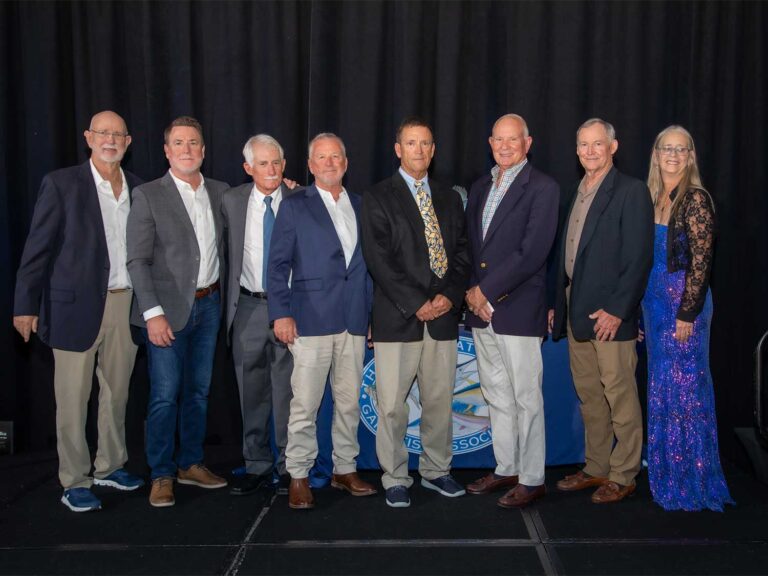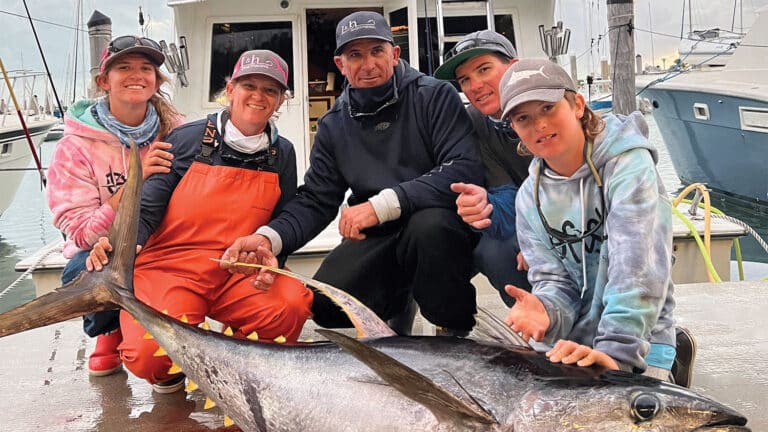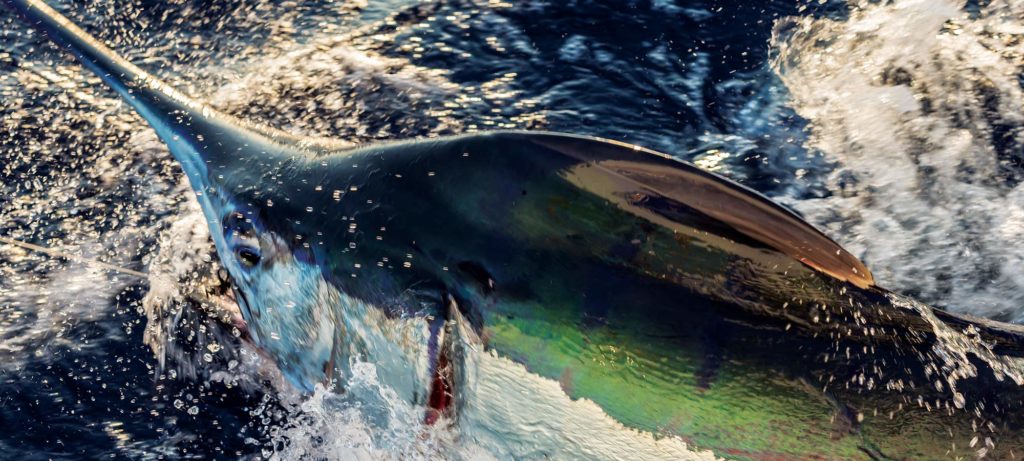
A blue marlin weighing 899.6 pounds on Cotton Patch won the 2015 Emerald Coast Blue Marlin Classic. A year later, an 806.8-pound blue on You Never Know won the 2016 Blue Marlin Grand Championship. In 2017, the heaviest blue marlin weighed only 654.2 pounds, yet it helped Capt. Jeff Shoults capture the Gulf Coast Triple Crown for his team on Mollie. Each of these quality Gulf of Mexico tournament fish had one thing in common: They were all caught on live bait. The only thing more impressive than the size of these fish was the size of the checks that were cashed.
Live-baiting for blue marlin is not a new technique. In Hawaii, there is a rich history of pulling lures for big blues, but captains there have been using live bait there for decades, long before lure-fishing became popular. In fact, live-baiting is well documented throughout the Pacific and elsewhere in the world.
But how has this technique gone from being something you would occasionally hear about on the docks a few years ago to the hottest method for winning tournaments in the Gulf of Mexico today? The answer lies in the abundance of oil and natural-gas platforms found throughout the region.
The Early Years
“All of us have used live bait, dating all the way back to the 1970s, ’80s and ’90s,” says Capt. Johnny Dorland, of Cotton Patch, from Orange Beach, Alabama. “The difference was just that there were no rigs back then for us to easily catch bait.”
Back in the early days, live-baiting was a technique of opportunity. Boats trolling on a rip or weed line would see a blue marlin feeding on the surface, then catch and rig up a small mahi before slow-trolling it along the line. Longtime captains have shared stories of successful marlin catches using this tactic, but they were few and far between. There was no way to keep the bait alive for long either.
In the 1980s, a weather buoy was installed around an area known as the Steps, about 60 miles from Orange Beach. Shoults, from Destin, Florida, says it was the first place that always held a good concentration of bait. “We could target blue marlin consistently using live baits there, but even so, it was nothing like how we do it today,” he says.
The lack of locations to catch bait wasn’t the only hindrance for captains before rigs became abundant. “We didn’t have tuna tubes back then either,” says Dorland. “If we did catch a small tuna, we had to immediately bridle it up. We had no way to keep small tunas alive on the boat.”
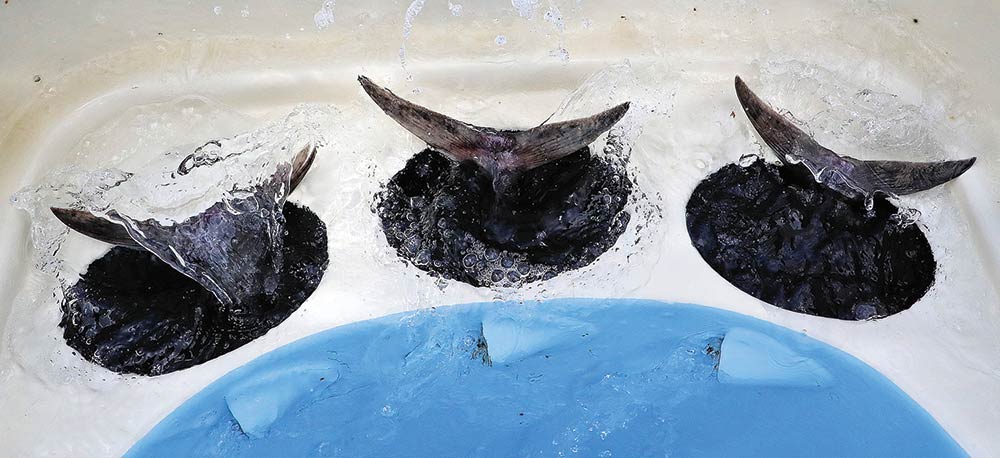
The Baits Get Tubed
But the game has changed today. There are hundreds of oil and gas rigs that hold incredible amounts of bait, and tuna tubes are as commonplace on Gulf Coast boats as outriggers. When live-baiting started to catch on years ago, captains began equipping their boats with four to six of these tubes in order to hold bait. The learning curve was quick; captains figured out a handful of tubes was just enough to hold a few baits, but it could be frustrating when you quickly exhausted your bait supply and had to reload.
Today, most boats are set up to handle a dozen or more live baits with high-velocity aerating pumps, which not only keep the bait alive but just as frisky as when they were first caught. The tubes are made of PVC and painted black on the inside to help calm the occupant. Baits are placed nose down, with hundreds of gallons of oxygen-rich water flowing through their gills. Modern tuna tubes are a game changer.
Also radically different today is the range and speed of tournament sport-fishers that now routinely run as much as 250 to 300 miles one way in search of their preferred bait and a tournament-winning blue marlin.
“Jason Buck, on Done Deal, was really the live-bait pioneer,” says Shoults. “He was the first one to leave the dock with a plan to run a couple of hundred miles just to start fishing. He would refuel, catch bait and he had the boat set up to keep his bait alive. Done Deal caught a lot of big fish, and won a lot of money doing it. After that, everyone took notice.”
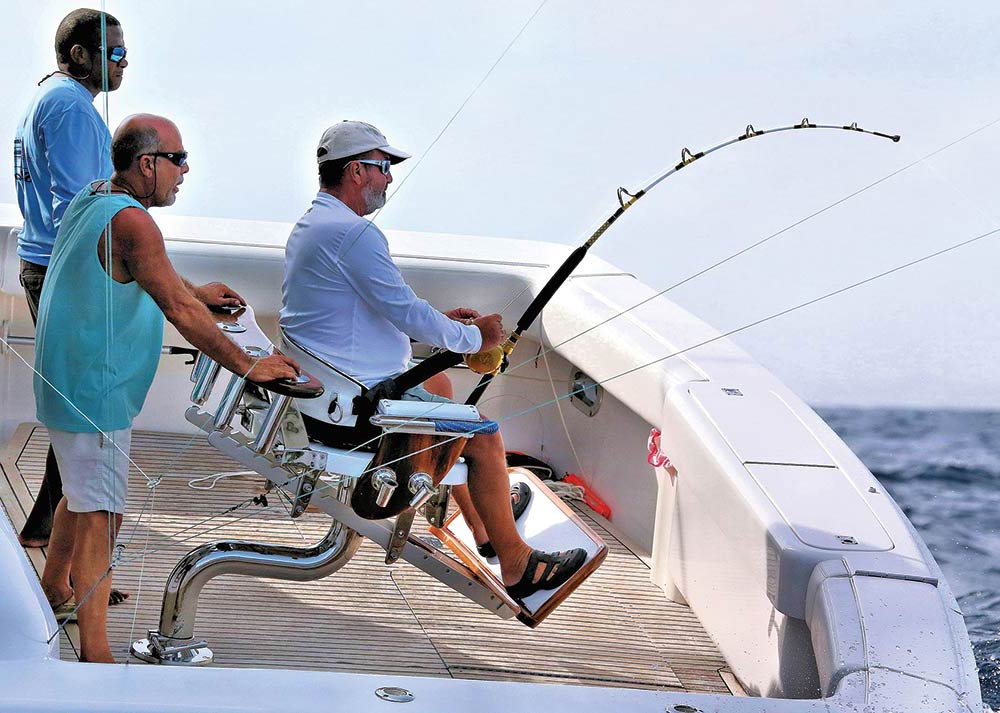
Making the Switch
Even after all the success of the Done Deal team, the transition to live-baiting for many captains was not an easy one. Longtime Gulf of Mexico skipper Capt. Joe Birbeck, on You Never Know, was one of many who were slow to come around. The idea of circling an oil rig all day at just 2 knots didn’t sound like time well spent to him. “I felt like I didn’t have the patience for it,” he says. “I just kept thinking about all the blue marlin I had caught on lures or pitch baits; it had to be 100-to-1 compared to live bait.”
And Birbeck isn’t alone. A slow day pulling lures is more enjoyable than a slow day of live-baiting. When the bites are few and far between, it is a painfully slow day on the water. With the plastics out, the boat is moving along nicely, you are covering lots of water, there is a cooling breeze and also the chance of hooking a bonus wahoo, dolphin, white marlin or sailfish while on the troll. Those fish aren’t going to eat a 20-pound blackfin at 2 knots. But few teams are interested in a mixed bag during a tournament when one bite can be worth several hundred thousand dollars.
“You are fishing for one fish, the biggest blue marlin at the rig,” says Dorland. “Your crew has to understand that.” The mindset has changed so much that Birbeck now says he has to give himself and his crew a pep talk when they switch back over to artificial lures, which they still do at times during tournaments. “The size of the fish we now catch on live bait is just consistently so much larger than all the fish we’ve caught on lures,” he reports.

The First Step: Making Bait
Captains today have hundreds of offshore rigs spread out over thousands of square miles to choose from, but the first step in the operation is always the same. In order to be successful, you must first secure a good quantity of your preferred species of live bait. Bait catching is also a nighttime task.
Once the sun goes down, the rigs light up the water around the platforms. The desired baits for blue marlin, primarily consisting of blackfin tuna, bonito and skipjack, hold tightly to the protection of the rig during daylight hours. But once darkness sets in, they venture away from safety to feed on smaller prey attracted to the water’s surface, now glowing from the lights of the rig.
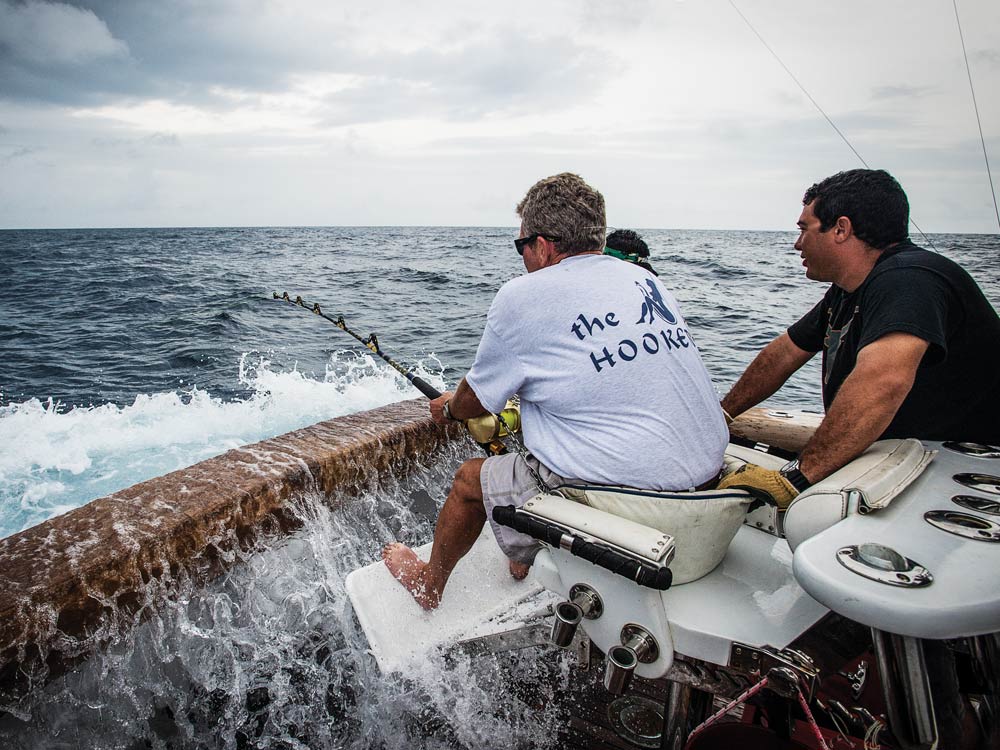
There is simply no way around the fact that catching bait during a three-day tournament is hard work for all involved. It adds late nights or extra early morning hours to an already grueling work schedule for the crew.
“If we are marking bait on a particular rig, we are going to commit to catching our bait there,” says Shoults. “That means we might either still be making bait at 2:30 in the morning, or we may have just pulled up to a rig at 3 in the morning to start catching bait.” Captains ease around rigs, looking to mark meatballs of bait on the sonar, usually on the up-current side. They might be holding at 60 feet or down a couple hundred feet.
Jigging up blackfin tuna in the middle of the night on a fun-fishing trip with your buddies can make for a great night with lots of action. Long battles with powerful fish on light tackle, bloody decks and a fish box full of tasty tuna is a trip most anglers would love once the sun comes up. But for tournament teams, it’s all business. You can’t start fishing for a blue marlin until the bait is caught. The pressure to fill the tubes is real, but the key is keeping the stress on the crew and off the freshly caught bait. “You have to treat each fish like a newborn baby,” Birbeck says with a laugh.
Birbeck gears up his crew to avoid fatiguing his anglers and the fish by using light reels paired with rods beefy enough to handle a lot of drag. “The last thing you want is your deckhand fighting a fish for 30 minutes,” he says. “The fish will be too spent to stay alive after it is caught, and your mate, who was already tired from a long day in the cockpit, is now exhausted. We have lost all that time and not added a fish to our bait total.”
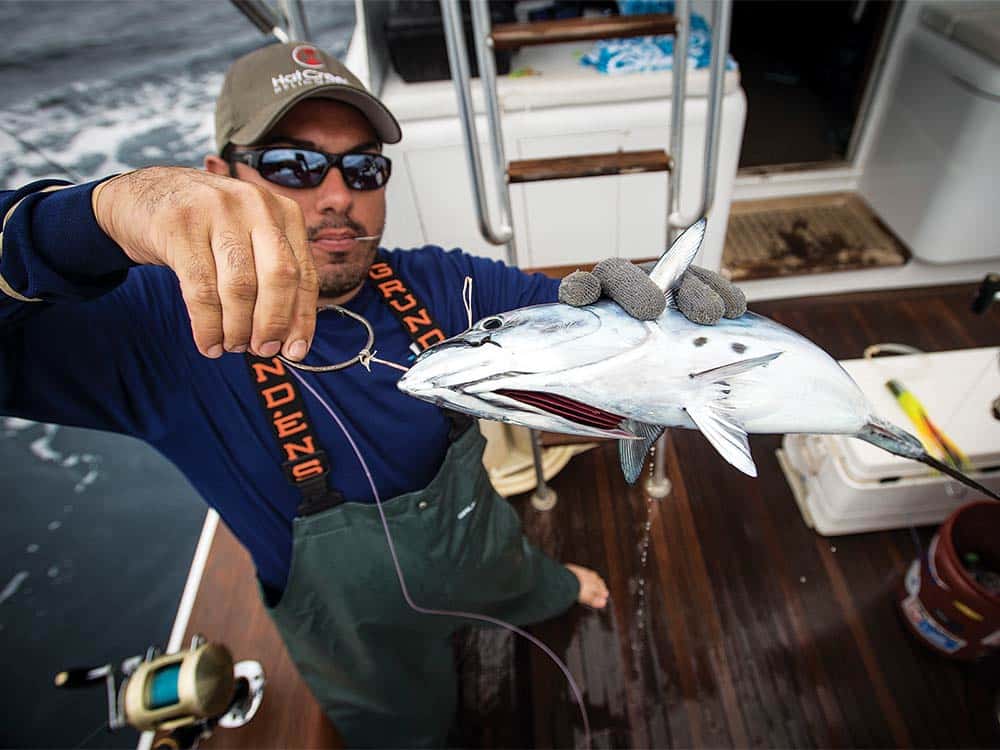
The Challenges Are Many
Captains seek both quantity and quality when it comes to live bait. Treble hooks on the jigs are swapped out for circle hooks. When a fish is boatside it is netted instead of gaffed. The goal is to get the fish in the tube as quickly as possible. If a fish is accidentally dropped on the deck, it is thrown back. Injured fish don’t live long in tuna tubes, and neither do bleeding fish.
On a perfect night, bait is marked, caught quickly and the crew gets a few precious extra hours of sleep. But in tournament fishing, especially with big money on the line, things rarely go as planned, and every decision by the captain is magnified. Even the top 1 percent of live-baiting tournament teams can struggle to make bait at times. The chosen rig might be devoid of life for some reason. Other nights, there might be plenty of bait on the sounder but they just won’t eat. Maybe they’ll turn on in an hour or two, or maybe they won’t.
Then, there are the sharks. “On a good night, you are going to need to catch 25 baits to get a dozen good ones in the tubes,” says Dorland. “But if the sharks are thick, you might need to catch 50 or 100 to get that same dozen.”
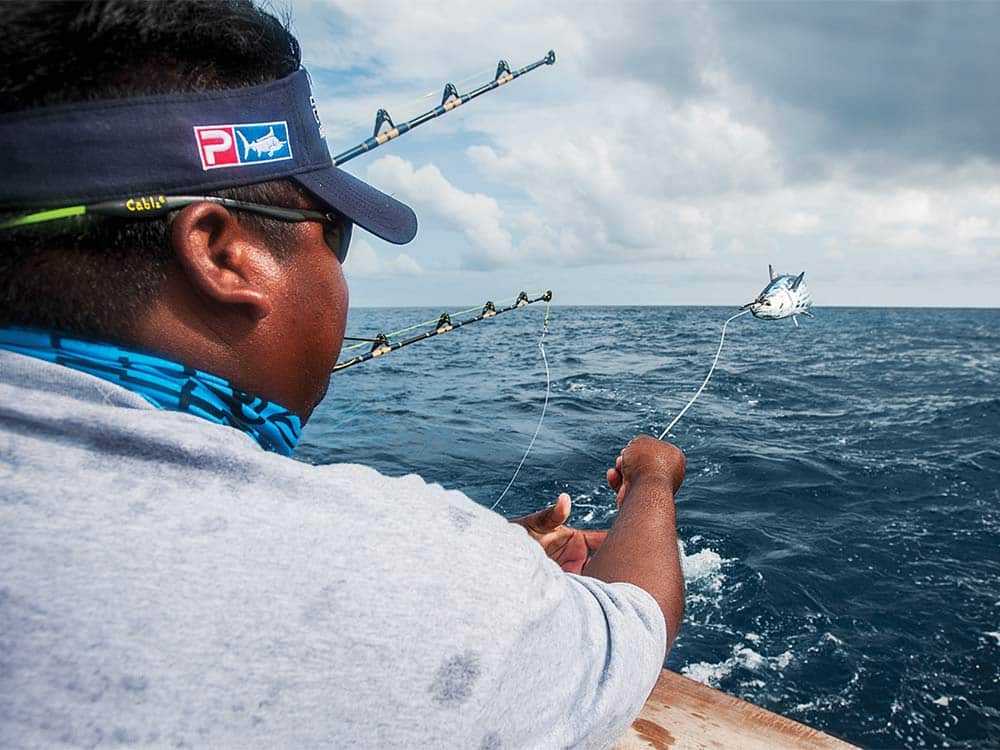
The Time Crunch
When it comes to catching bait, there is only one thing worse for captains and crews than trying to catch bait at a rig that is lifeless or shark-infested, and that is having to make bait during the daylight hours. After the sun comes up, the small tunas have retreated back toward the safety of the rig. They have also spent all night feeding, so they can be very tough to catch. Teams have learned daytime techniques, such as pulling planers with small lures and flies, but it never works as well as jigging at night.
But the biggest bonus is when you’re catching bait at night, you are not losing any tournament-fishing time. Every minute spent catching bait during the day is a chance for someone else to catch the tournament-winning blue marlin. Many events have been won by teams that caught their bait first and were able to start fishing right at daylight. If your tubes are still empty, you don’t stand a chance.
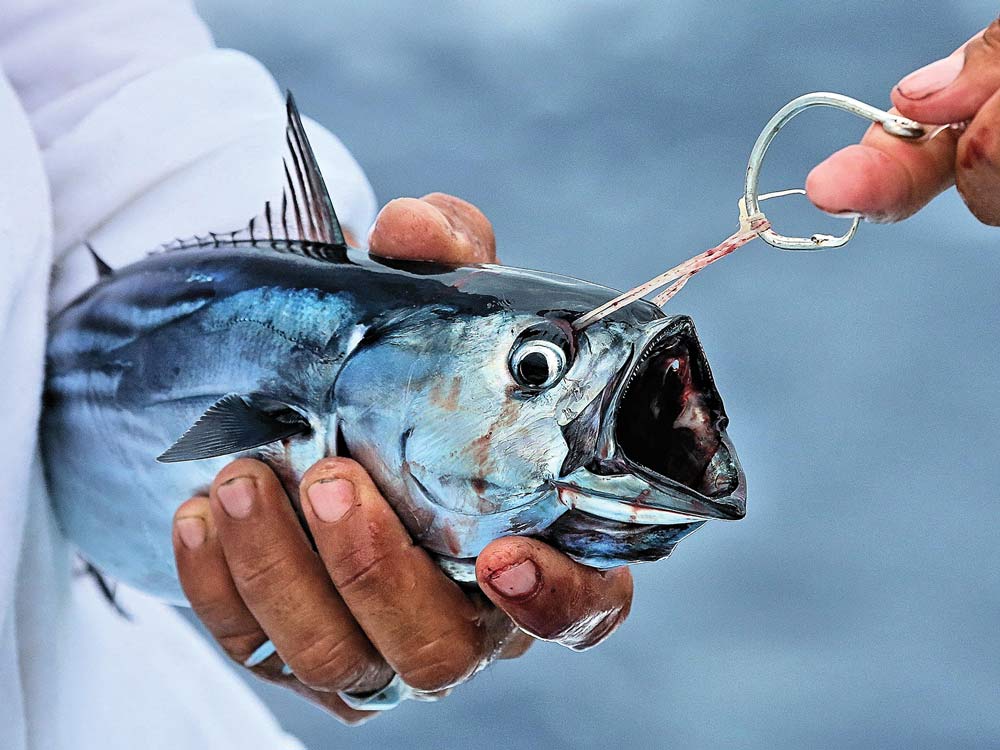
Rig ‘Em Right
If you think catching bait during the day is hard, try getting a captain or mate to tell you exactly how they rig live baits on their boat. Every team does it a little differently, and they all have invested too much time in trial and error to share their secrets. They will all speak in general terms, but being tight-lipped isn’t just for fish that aren’t hungry.
The basic concept is the same on every boat, but the subtle nuances are what give teams confidence when the bite occurs. All live baits are rigged on circle hooks, but how and where the hook is attached can vary greatly. Some boats use monofilament bridles, while others prefer Dacron or braid. Some still use old-school No. 84 rubber bands. Bridle positions vary as well: Through the front of the eye socket, the nose and the lips of the bait are all popular spots.
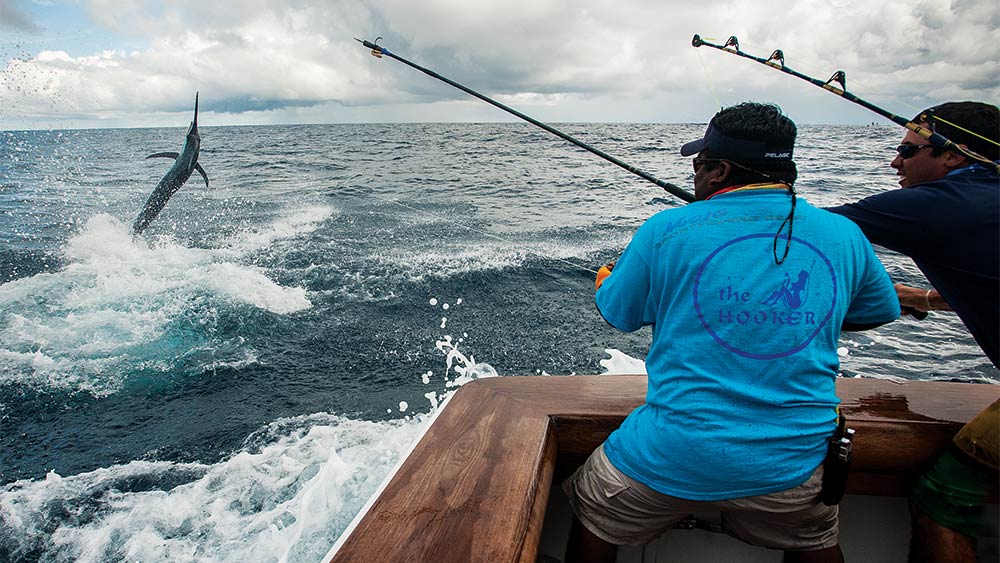
“We spent a lot of time figuring out what happens after the bite,” says Shoults. “You want the bait to come unbridled after the fish has eaten it, but you don’t want the fish to be able to shake its head and throw the hook out with the bait still attached.” Every blue marlin bite on live bait is different. Cooperative fish might need only a 10-second drop-back, while others might take 30 seconds, a minute or more.
Today’s sonar can spot marlin from the depths, but a disruption on the surface can be just as telling as today’s most expensive electronics. “When I see a school of hardtails shower in panic across the surface around a rig, I know what fish just caused that commotion,” says Shoults. “We are going to buckle in and wait for that fish to eat again.”
Sometimes it’s not just the fish you are trying to out-wait — it’s also other competitors. During a big tournament, there may be other boats, maybe even a dozen or more, all fishing around the same rig, trying to catch the same fish. “When the rig is crowded, I try to find a way to alter our presentation,” says Shoults. “I want to make our offering just a little bit different from everyone else’s because that may be the difference between us getting the bite instead of another boat.”
The secret to catching big blue marlin in the Gulf of Mexico is not so secret any longer. For those willing to put in the time and effort, live-baiting is a time-tested, tournament-winning tactic.
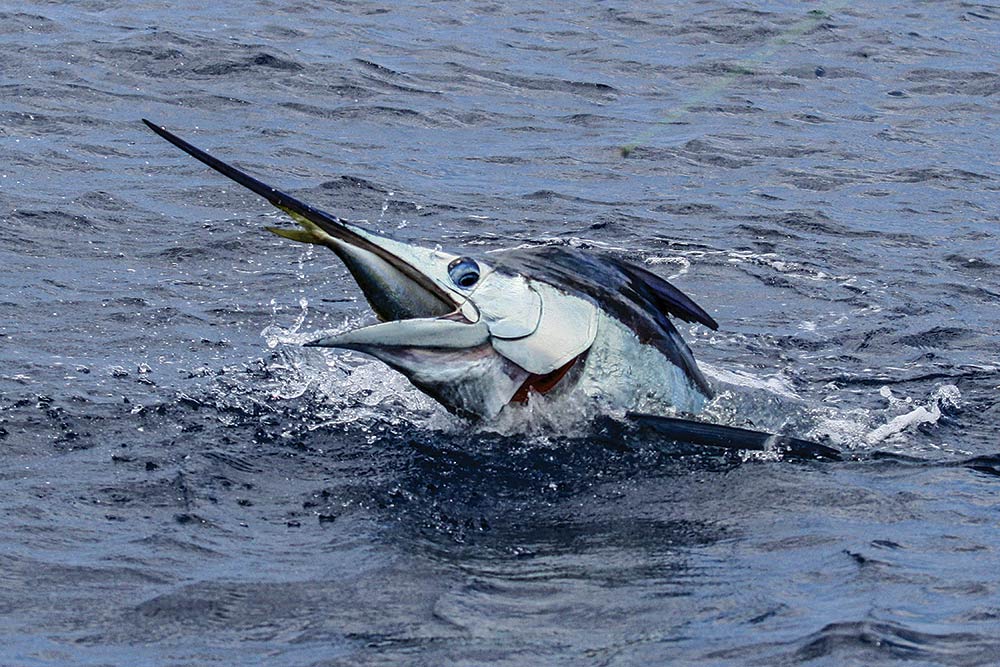
What is Your Favorite Live Bait?
“I really like a big oceangoing bonito and, of course, a blackfin tuna. But if all I have are hardtails, then they are my favorite bait at the time. I have even used rainbow runners.” —Johnny Dorland
“A big skipjack is my favorite. They are faster than blackfin tuna, so the marlin do not get a chance to chase them down as often. I think they are a unique bait.” —Jeff Shoults
“We like to use skipjacks whenever we can. They aren’t as plentiful as blackfins, so it’s almost like we are offering the marlin a special treat when we put one out.” —Joe Birbeck




